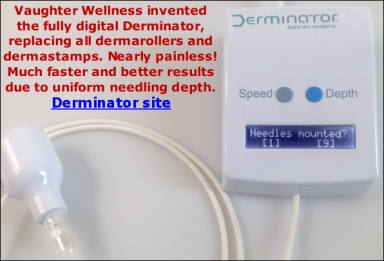Scar tissue, whether raised, flat or indented is abundant in collagen but the scar collagen is thick and typically woven in a different pattern than in the normal skin.
Scar tissue isn't really different from normal skin, however the thickness and patterns of the fibers are different.
Crushing the scar tissue will crush the scar pattern of the fibers and the body will often remodel the scar into a better looking, softer scar.
Our body does not fix something that is not "broken". Scar tissue is just a cosmetic problem, it is not perceived as "broken" by our body. Needling or dermarolling is a trick to make the body remodel the scar. Making tiny pricks is not enough to cause a scar but it is enough for the body to see needled/rolled skin as "broken" and trigger healing processes. Unfortunately, our body usually does not bother replacing the scar tissue completely with normal skin - especially when the scar is deep - but it often replaces it with a mixture of scar and normal tissue, producing a better looking scar.
Needling/dermarolling triggers healing processes and the body tends to heal the area in a way, at least partially, as it normally should be. Indented scars fill in and raised scars flatten. It does not work in 100% of cases but in many cases it works.
Whatever you use, always make a test patch first to see how it heals.
When we get an injury that is serious, the body will quickly fix it with scar tissue to prevent an infection etc. The scar "glues" the skin together.
Needling or dermarolling does not produce scar tissue. When you needle or roll normal skin, it will heal as normal skin.
When you needle or roll a scar, it will often improve the scar but unfortunately, as I said, the body "refuses" to completely replace deep scars with normal tissue. Evolution apparently did not deem it necessary. So far, nothing exists that can completely remove a deep scar.
You should not needle or roll keloid scars. It could make them grow larger.





